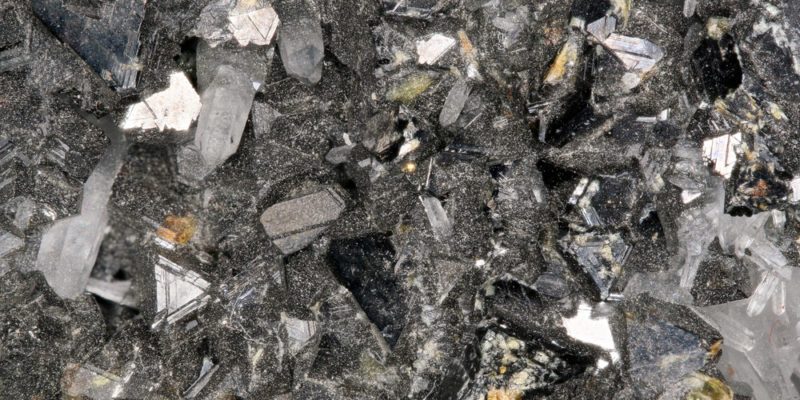We explain what zinc is, who discovered it and the properties it has. Also, what are its characteristics, uses and importance.
What is zinc?
Zinc or zinc is a metallic chemical element , present in the Periodic Table in group 12, part of the transition metals.
Zinc is a common element , of biological importance and of numerous industrial applications, especially as part of metallic alloys.
It is a relatively reactive metal , which has four metastable states and radioactive isotopes with a half-life of less than 14 hours (except for a couple).
Who discovered Zinc?

Zinc has been known to mankind since ancient times , before its elemental properties were known. Brass objects with up to 87% zinc have been found in the ancient region of Transylvania.
It was known to the Romans as aurichalcum and was obtained by heating a crucible of cadmium (calamine) with copper .
It was the Swiss scientist Paracelsus in the 16th century who proposed that it was a metal with its own properties, which he called zincum , despite the fact that it was often confused with bismuth.
Zinc was first isolated in 1742 and 1746 by Anton von Swab and Andreas Marggraf respectively, from calamine heating. The treatise written by Marggraf was so specific that he is considered the discoverer of this metal.
Chemical properties of Zinc

Zinc is a metallic element, similar to magnesium and cadmium , quite active chemically.
It is almost always divalent in its compounds, it reacts with acids releasing hydrogen atoms and forming cations (Zn 2+ ). On the other hand, it is soluble in strongly alkaline solutions to form tetrahydroxozincates (Zn[OH] 4 2- ).
In the presence of air , it is combustible with difficulty , it produces a greenish-blue flame and releases a fume of zinc oxide (ZnO). If the air is free of humidity, it hardly reacts with the zinc, but if it is humid, it oxidizes it.
Physical Properties of Zinc
Zinc is a silvery or grayish metal that is malleable, ductile, and moderately hard, so it can be easily rolled and stretched.
It is an excellent conductor of heat and electricity , is not ferromagnetic , and has a melting point of 419.5 °C and a boiling point of 907 °C.
It has a density of 7.13 g/cm 3 , which is greater than that of water (0.998 g/cm 3 ). On the other hand, at a temperature of 0.91 °K (degrees Kelvin) it behaves as an electrical superconductor.
How is zinc obtained?

Zinc is the 23rd most common element in the Earth's crust , generally found as zinc sulfide (ZnS) in the minerals known as sphalerite or sphalerite, calamine, hemimorphite, and franklinite.
There are proven reserves of this metal of up to 2,000 million tons, distributed in various countries.
Once the minerals with zinc have been extracted, two procedures can be applied to obtain the concentrated element:
- Dry way . Ideal for ores with a high iron content , it consists of roasting the ore to convert the sulfides into oxides (calcine) and then reducing them with carbon.
- wet way . After roasting the ores, they are treated with diluted sulfuric acid, and phase-separable lyes are obtained. The resulting zinc sulfate is then subjected to electrolysis with lead and aluminum , forming pure plates of zinc on the aluminum.
Zinc Uses

In human industries , zinc is widely used, especially in the treatment of other metals, in the form of alloys. Some of the applications of this element are:
- Galvanized iron, to protect it from corrosion.
- Production of brass, an alloy of zinc with copper. Containers, watch parts, etc. are made with this material.
- Zinc sheets for roofing and other uses in the construction sector.
- Production of batteries for computers, missiles and space capsules.
- Manufacture of paints and enamels (zinc powder is used).
- As an additive in precious metals metallurgy and to remove silver from lead.
- As a pharmaceutical input, dietary supplement and other medicinal uses.
Zinc Toxicity
Zinc is not a toxic metal , but some of its compounds such as zinc oxide and sulfide are.
Also, the release of zinc particles can interfere with electronic devices and electromagnetic fields .
Zinc is necessary for life , but its excessive intake can also bring health complications.
Biological importance of Zinc

Zinc is necessary for many of the body's biochemical reactions , especially the formation of muscle tissue and bone .
It is one of the metals involved in synaptic transmission (between neurons ) and in numerous enzymatic processes, which is why it is a fundamental element in intracellular communication .
Its deficiency has consequences on the performance of the nervous system , since it causes emotional disorders, memory loss or decreased concentration. In addition, it is associated with hair loss , weak nails, general tiredness and even lack of sexual appetite.
Foods with zinc

Some foods rich in zinc are:
- mussels, oysters, shrimp, prawns and shellfish and crustaceans in general.
- Red and white meats: beef, pork, lamb, poultry (including organ meats).
- The yolk of the eggs.
- Fish in general .
- Legumes, seeds, nuts and wheat germ, although in significantly low amounts.
Compounds with zinc
Zinc is quite reactive and generally forms oxides , such as zinc oxide (ZnO), one of the most widely used as a semiconductor.
Other well-known compounds are zinc sulfate (ZnSO 4 ), zinc chloride (ZnCl 2 ) , and zinc sulfide (ZnS), all of which have numerous applications in human industries.
Zinc exporting countries

The largest producers of zinc today are China , Australia, Peru , the US and New Zealand.
The above content published at Collaborative Research Group is for informational and educational purposes only and has been developed by referring to reliable sources and recommendations from technology experts. We do not have any contact with official entities nor do we intend to replace the information that they emit.
Abubakr Conner brings a diverse skill set to our team, and covers everything from analysis to the culture of food and drink. He Believes: "Education is the most powerful weapon that exists to change the world." .
Leave a reply
Your email address will not be published. Required fields are marked *Recent post

Sport: What Is It, Types, Risks, Features, Characteristics and Examples

Dogs: Emergence, Features, Characteristics, Feeding and Breeds

Story: Definition, Elements, Structure, Features and Characteristics

